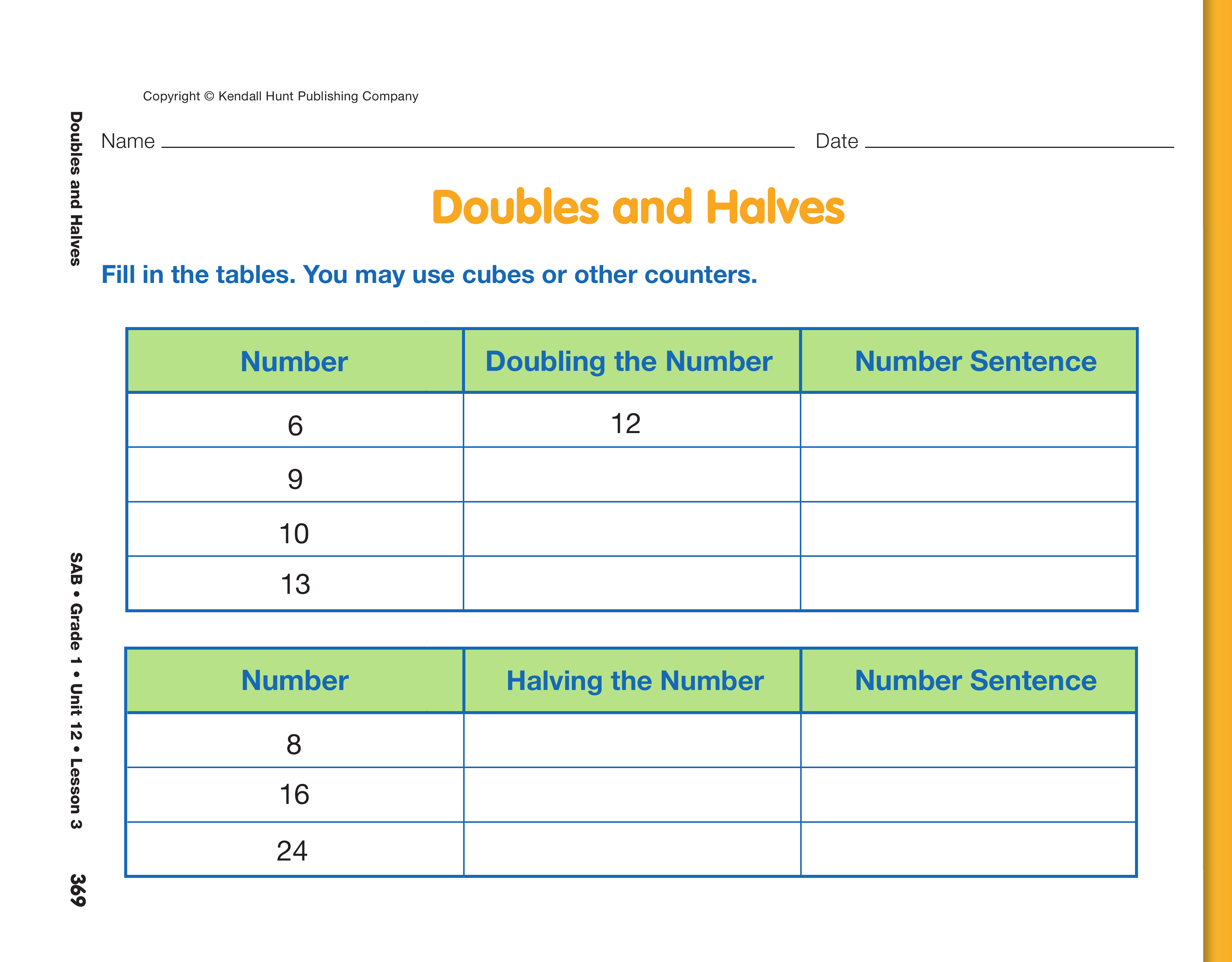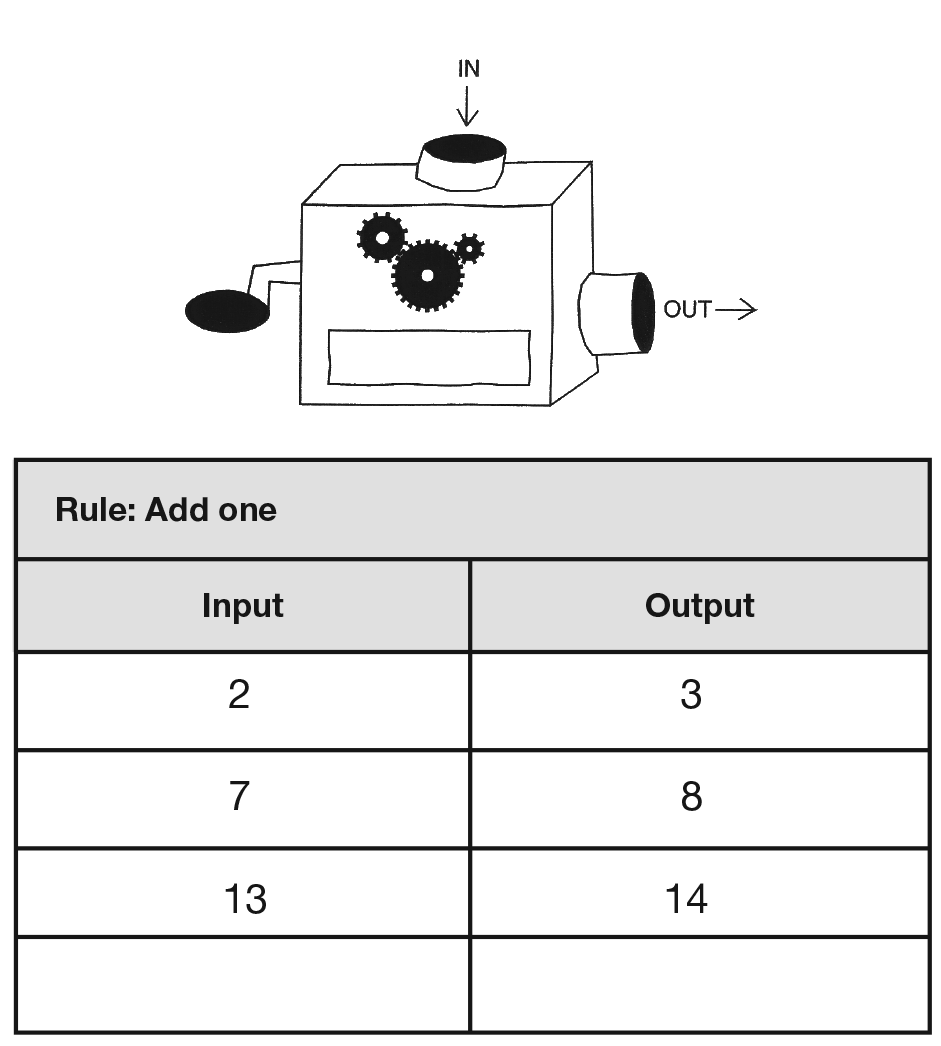Doubles and Halves
Est. Class Sessions: 2Summarizing the Lesson
To introduce the Guess My Rule game, show the Guess My Rule Machine Master or a box decorated to look like a Guess My Rule Machine. Tell students that they will give you a small number, and you will tell them the result of what happens to the number after you put it in the Guess My Rule Machine. To begin, add one to the number a student suggests. Write down their suggestions as well as the output from the machine in a data table with two columns: Input and Output. Let students guess the rule. Students should be able to explain how they guessed the rule. When the rule is guessed, write the rule at the top of the table. See Figure 7.
Play a few more rounds of Guess My Rule. Some suggestions for rules to guess:
- Add two.
- Add ten.
- Number partner to make a ten (the numbers must be ten or less). For example, if a student suggests the number 7, then the output is 3 because 7 + 3 = 10.
When you have almost full participation from the class, go to doubling the number for the next game. For the final game, ask students for an even number input for halving.
After students identify the doubling and halving rules, ask:
Play one Guess My Rule game again with a variation. To vary the game, start by telling the rule and alternate between giving the input or output, leaving the other column blank. For example, tell the rule "add one" and fill in 7 in the output column. Students then determine that the input is 6. Or, fill in 8 in the input column, then students determine the output is 9.
Assign the Guess the Output Homework Master to promote critical thinking skills and reinforce computation strategies.
Provide connecting cubes or other counters and tools for students to independently complete the Doubles and Halves page from the Student Activity Book on which students are asked to fill in tables for doubles and halves.


















